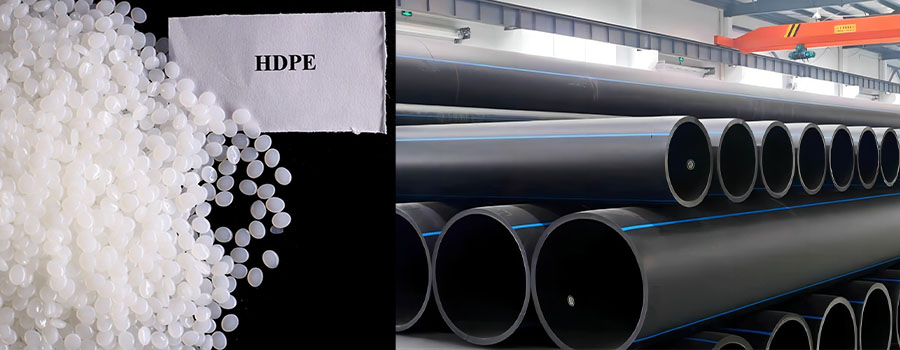23
Nov
10 Maintenance Tips for Extending the Lifespan of HDPE Pipes
High-Density Polyethylene (HDPE) pipes are renowned for their durability, flexibility, and resistance to corrosion, making them ideal for a wide range of applications in industries like water management, mining, and gas distribution. However, to ensure they maintain their high performance over time, it’s essential to follow proper maintenance practices. Here, we’ll delve into essential tips for extending the lifespan of HDPE pipes.
10 Maintenance Tips for Extending the Lifespan of HDPE Pipes
1. Regular Inspection and Monitoring
Regular inspections are crucial in identifying potential issues early. Check for signs of wear, damage, or unusual stress. Employ inspection techniques like:
- Visual inspections for surface damage.
- Pressure tests to detect leaks or weaknesses.
2. Proper Installation
Proper installation is key to preventing early failures. Ensure adherence to best practices like:
- Using the right tools and techniques for joining and fitting.
- Avoiding excessive bending or twisting during installation.
3. Avoiding Chemical Exposure
Although HDPE is resistant to many chemicals, prolonged exposure to certain substances can degrade the material. Steps to mitigate this include:
- Identifying local environmental conditions.
- Ensuring compatibility with chemicals in contact.
4. Handling Temperature Extremes
HDPE can be sensitive to temperature extremes. To manage this:
- Avoid direct exposure to high temperatures.
- Insulate pipes in areas prone to freezing.

5. Preventing Mechanical Damage
Protect HDPE pipes from mechanical damage by:
- Burying the pipes at a sufficient depth.
- Using protective layers or barriers where necessary.
6. Ultraviolet Protection
Long-term exposure to UV can weaken HDPE pipes. Employ strategies like:
- Using UV-stabilized HDPE.
- Covering exposed pipes with protective materials.
7. Dealing with Water Hammer
Water hammer can stress pipes. Mitigate this by:
- Installing water hammer arrestors.
- Ensuring smooth and gradual valve operations.
8. Cleanliness and Debris Management
Keeping pipes clean and free from debris extends their life by:
- Regular flushing to remove sediments.
- Using filters to prevent the entry of large particles.
9. Upgrading and Replacement
Be proactive in upgrading or replacing pipes that:
- Show signs of significant wear.
- Are approaching or have exceeded their expected lifespan.
10. Training and Awareness
Train staff in proper handling and maintenance practices to avoid accidental damage.
Tables and Charts for Reference
Inspection Schedule Table
| Frequency | Inspection Type | Details |
| Monthly | Visual Inspection | Check for external damage, discoloration, or deformation. |
| Bi-Annually | Pressure Testing | Conduct pressure tests to identify any leaks or weaknesses. |
| Annually | Full System Audit | Comprehensive review of the entire piping system. |
| As Required | Post-Event Inspection | Follow-up checks after events like severe weather or seismic activity. |
Chemical Compatibility Chart
| Chemical | Compatibility with HDPE | Notes |
| Acids (low concentration) | High | No significant effect noted. |
| Alkalis | High | Resistant to most alkalis. |
| Hydrocarbons | Moderate to Low | Some hydrocarbons may cause swelling. |
| Chlorinated Solvents | Low | Likely to degrade HDPE. |
Temperature Exposure Guidelines
| Temperature Range | Effect on HDPE Pipes | Recommendations |
| < 0°C (32°F) | Potential brittleness | Use insulation for protection. |
| 0°C to 20°C (32°F – 68°F) | Optimal operating range | Ideal conditions for HDPE. |
| > 40°C (104°F) | May soften or deform | Avoid prolonged exposure to high temperatures. |
These tables are simplified examples. For specific applications and conditions, consulting detailed res
Refer to industry sources and manufacturer guidelines for specific data and instructions. Regularly update your knowledge base with the latest industry findings and innovations.
For detailed charts, graphs, and latest industry reports, resources like the Plastic Pipe Institute (www.plasticpipe.org) and recent industry publications can be invaluable.
In conclusion, with diligent care and attention to these maintenance tips, you can significantly extend the lifespan of HDPE pipes, ensuring they continue to function effectively and efficiently in their various applications.

